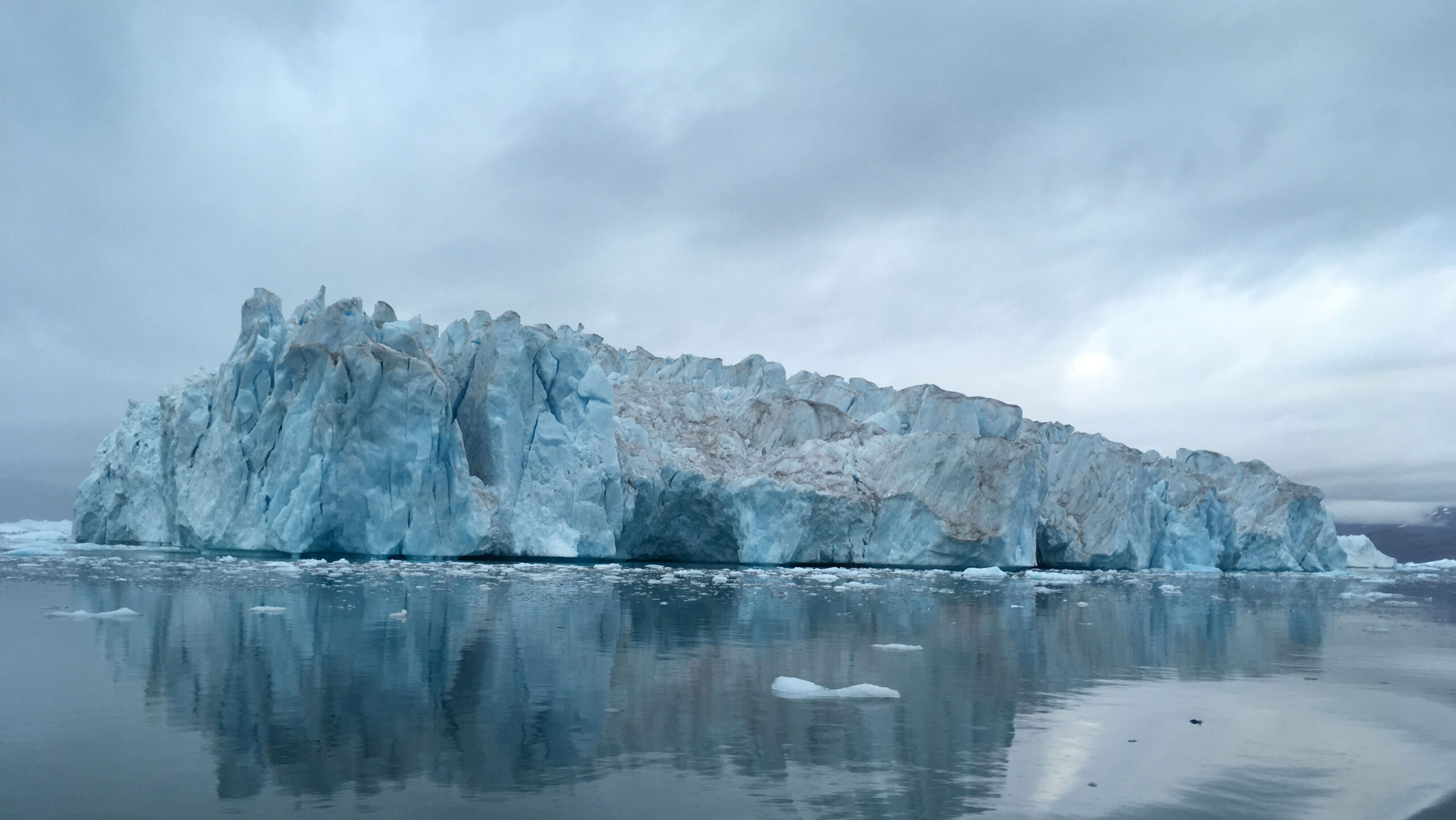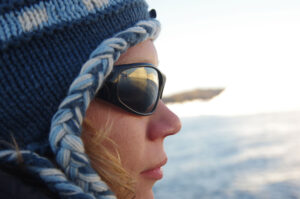
Schild examines impact of icebergs on ocean circulation, climate, coastal communities
Kristin Schild, a physical glaciologist at the University of Maine, broadly studies interactions between ice and the ocean. Her research has taken her all over the world, including to Greenland and Patagonia, at the southern tip of South America.
Schild became interested in glaciology through physics. She completed her undergraduate degree in psychology, with physics and math minors, at Southern Methodist University in 2007.
“After undergraduate, I really wanted to apply my degree to better understand and quantify environmental change. I had planned to go into physical oceanography, focusing on coastal environments, but as soon as I learned that people study glaciers for their job, I immediately transitioned to focusing on ice-ocean interactions,” Schild says.
She uses remote sensing and field measurements to examine how, why, and at what speed icebergs plunge into the ocean, as well as where they travel, how quickly they melt, and how much freshwater they release into the ocean.
Icebergs are made of fresh water and come in all different sizes, so the amount of water that melts off of an iceberg depends on its size. They deteriorate by breaking into smaller icebergs, in addition to melting, so the number of icebergs that are in the ocean at a time is constantly changing.

The ocean and its ecosystems are dependent on certain water temperatures and salt levels (salinity). The meltwater off of icebergs puts more freshwater into the ocean, changing the temperature and salinity of the water.
With data from drones, GPS, and field measurements, Schild determines the shape and size of icebergs, and how quickly they shrink and change over time. She says the data could make global climate models — which currently do not include data about icebergs — more accurate.
“Right now, global ocean and global climate models don’t take into consideration icebergs. They’re kind of these problem children.” Schild explains that once icebergs are off the continent, they are not part of the glacier, so glaciologists aren’t focused on them, and they also haven’t melted yet, so oceanographers aren’t focused on them. However, the freshwater they inject is important to global circulation models, so the study of icebergs and how they melt is important, and is luckily starting to gain some traction.
Schild, who coordinates the UMaine Arctic initiative, also looks at the impact of changes in the Arctic on Maine. One of Schild’s projects teams with a geoarchaeologist to collaboratively examine coastal erosion, and the impact of increased storm surges and freeze-thaw events. They utilize drone footage, data from remote sensing, and field measurements, to better understand coastal change.

While a majority of her fieldwork is in the Arctic, her research is particularly relevant to Maine. “A lot of our climate is dependent upon the ocean. A lot of our livelihood is dependent on the ocean,” she says. “So, even though changes in the Arctic are really far away, their impacts are happening in Maine, and they’re affecting things like our lobstering, our fishing, even our climate and our weather is really impacted by changes that are happening up in the Arctic.”
In Greenland, Schild again uses GPS technology and satellite imagery to gather data about icebergs. She measures their size and shape, as well as their speed of travel, to see how their meltwater impacts ocean circulation.
In Patagonia, she concentrates on the Southern Patagonia Icefield, which she says is highly susceptible to variations in climate, because it is situated in a region that experiences increased precipitation and has overall warmer ocean and atmospheric temperatures. The smallest of changes here could result in dynamic shifts of glacier behavior.
Schild says that research in this region can give us a lot of insight as to what we might expect in the future for Greenland or Antarctica under warming conditions.
While she currently studies individual icebergs in Greenland, Schild plans to increase the scale of her research to include measurements of iceberg distribution across the Arctic and identify potential pivotal regions of meltwater injection.
“Right now meltwater is not included in global climate models but needs it to be. So that’s what this research is working towards.” The goal is to determine what boundary conditions we can add to the models to make them even more accurate.
Contact: research@maine.edu
Written by Ali Tobey
